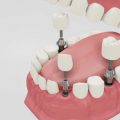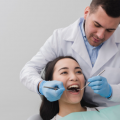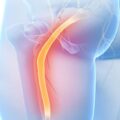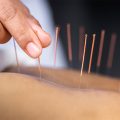It’s very difficult to live with persistent knee pain. Arthritis, excessive foot pronation, or straining of the muscles that protect your knee can all create discomfort and uncomfortable sensations in your joints. Knee arthritis is the leading cause of physical disability in the United States. Have you ever thought about how to get rid of knee pain?
Read on to find out how to decrease and avoid chronic knee pain.
1. Strengthen your glutes
When your glutes are weakened, the pelvis will fall and the upper thigh bone (femur) will drop inward. When you walk, this imbalance causes uncomfortable downward strain on your hip, knee, and ankle. Hip extensions are an excellent workout for straightening your gluteus maximus. Consider incorporating them into your training program.
2. Stretch the muscles supporting your knees
A sedentary lifestyle can cause your glutes to atrophy. As a result, your hamstrings and hip adductor muscles may become overworked and begin to put pressure on your knee joint (as they work to make up for the weakened glutes).
Stretching these support muscles is critical for reducing the danger of muscular imbalance. So, as you’re straightening your glutes, don’t forget to stretch your inner thigh muscles as well.
3. Visit a specialist
If you’re dealing with persistent knee pain, make an appointment with a knee pain specialist. The sooner you identify the source of your problem, the sooner you can find relief. A knee doctor can treat you with physical therapy, stem cell therapy, and regenerative laser procedures.
In some cases, your doctor can recommend knee injections for pain relief to allow you to proceed with the physical therapy regimen. Keep in mind that timely preventative therapy is critical to avoiding invasive and expensive surgery in the future.
4. Train your core muscles
Your pelvis may lean forward as a result of weak muscles in your abdomen, leading to an abnormally bent lower back and shifting leg bones. Core muscle training can assist in achieving optimal spine alignment and reducing pressure on the knee joints.
5. Manage your weight
Excess body weight increases your chances of developing knee osteoarthritis. Fat reduces muscle strength, and excess weight puts strain on your knee joints. Your body weight and quadriceps muscle strength are in fact linked. As a result, the more you weight, the weaker your knees get.
6. Try heat and cold treatment
Heat and cold therapy can both help to relieve knee pain. However, you should select a remedy based on the type of pain you’re feeling. Hot compresses should be avoided if you have inflammation because they will only worsen the situation. Heat therapy is ideal for relieving chronic arthritic pain. Yet, if you have a sports injury, you should try cold therapy.
7. Wear comfortable shoes
Wearing high heels adds more than 20% to the stress on your knees. High-heeled shoes also cause calves to tighten, which is another typical source of unpleasant sensations in the knees.
Wearing flat shoes and stretching your calves can help. In addition, replace your workout sneakers every couple of months. This is an excellent alternative to wearing shoes with inadequate cushioning support for your feet and joints.
8. Consider keeping a food diary
Consuming nightshade vegetables such as eggplants, tomatoes, and potatoes may lead to inflammation in some osteoarthritis sufferers while providing pain relief in others. Keeping a diary of your diet and symptoms may be beneficial. You can begin by avoiding these foods for a few weeks and keeping track of how you feel. Then, gradually reintroduce new foods to see whether your symptoms increase.
The bottom line
Consider implementing the tips above to decrease and prevent uncomfortable sensations and discomfort in your knees. Try using glute-straightening exercises in your routine, as well as stretching your inner thigh muscles, conditioning abdominal muscles, and keeping a healthy body weight. Besides, heat and cold therapy may be used to alleviate pain as well. Consult a doctor to discuss treatment options if you have chronic knee or joint pain and wish to find relief.







































No Comments